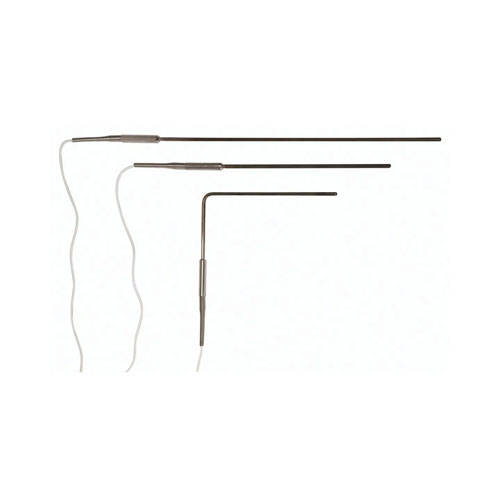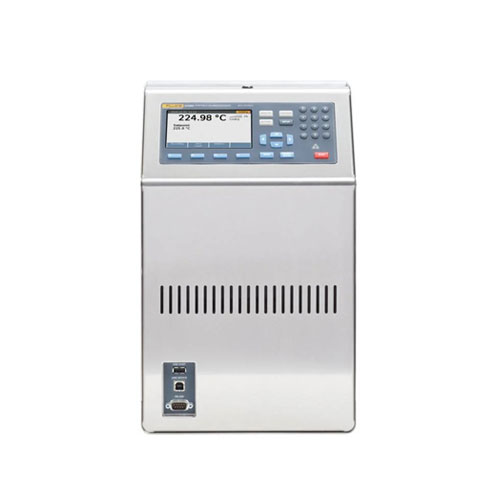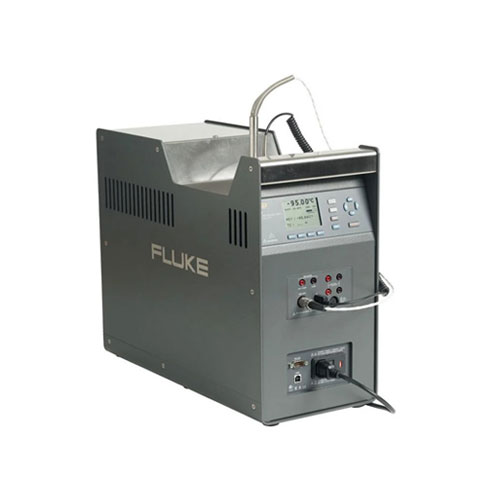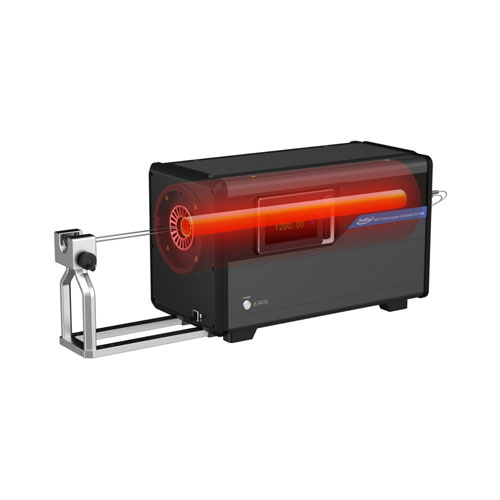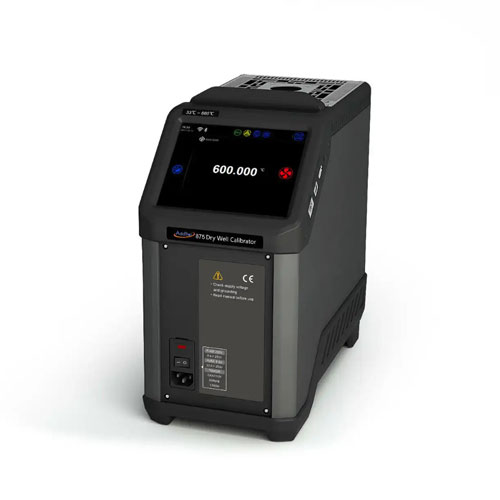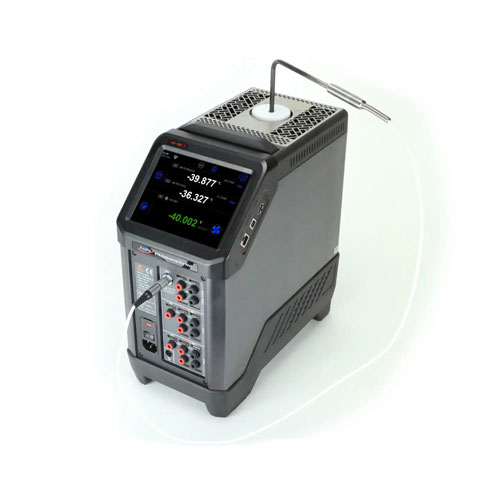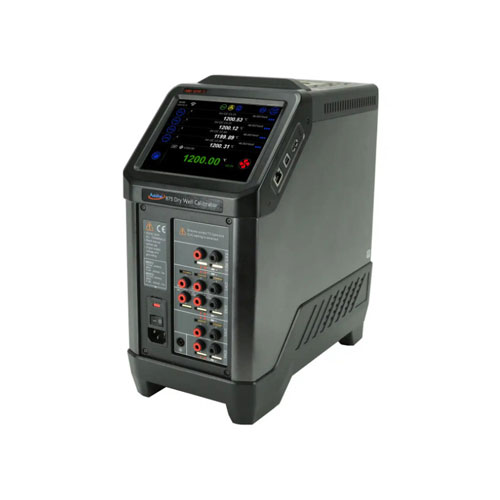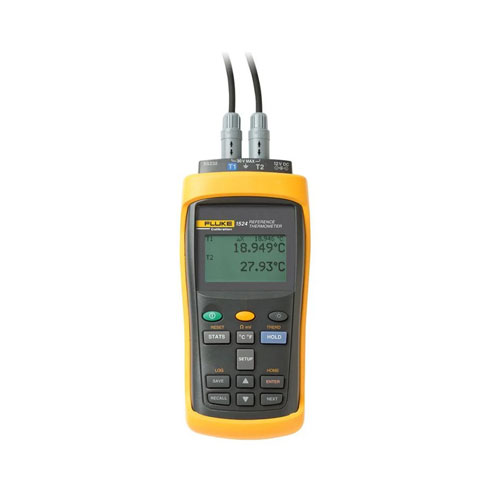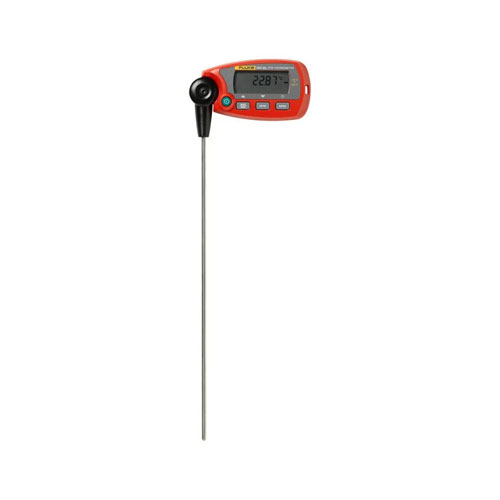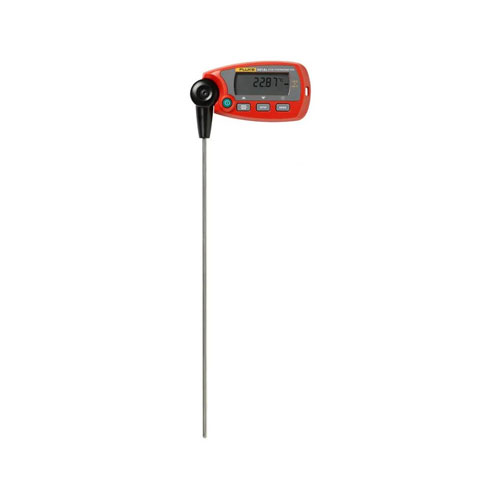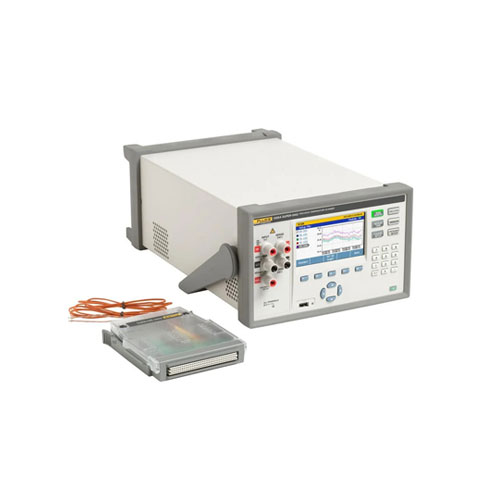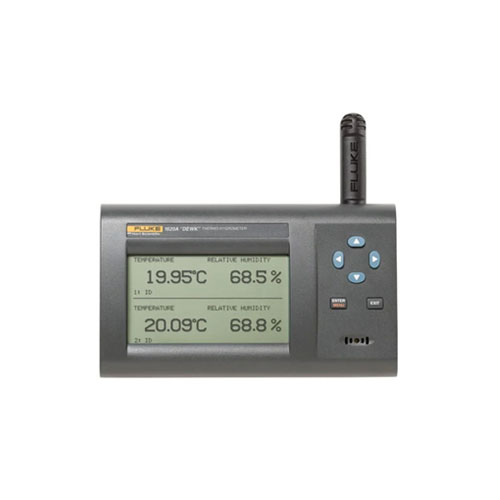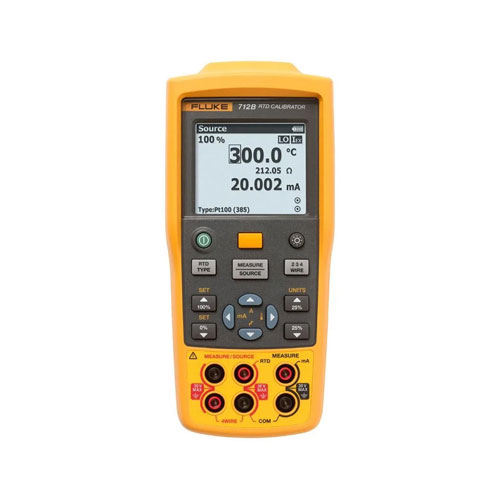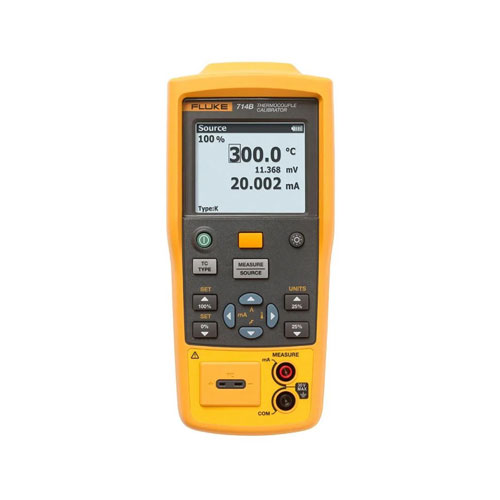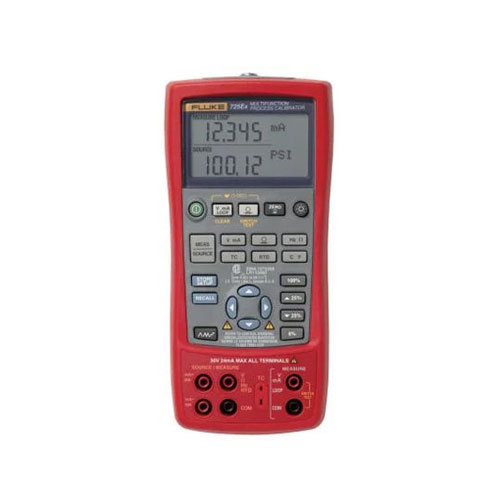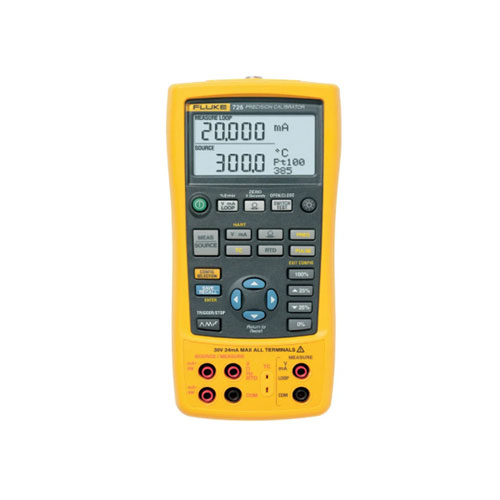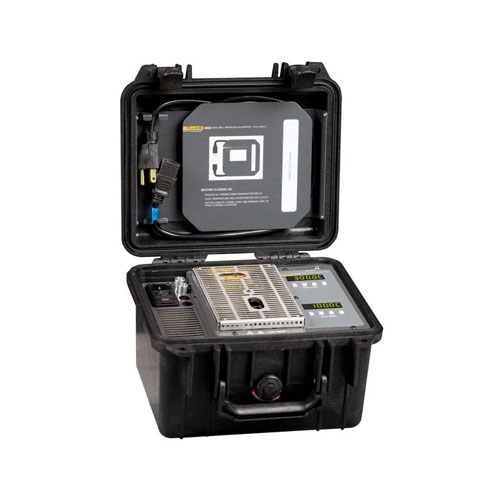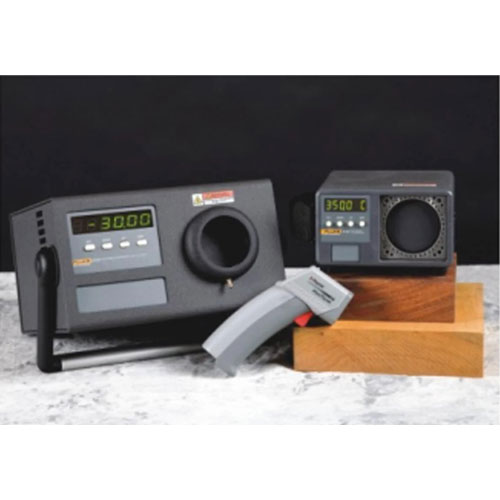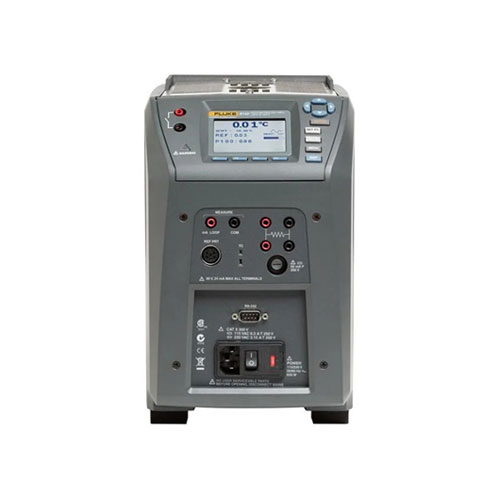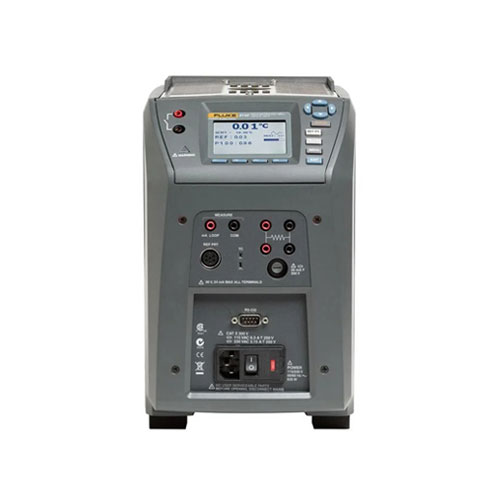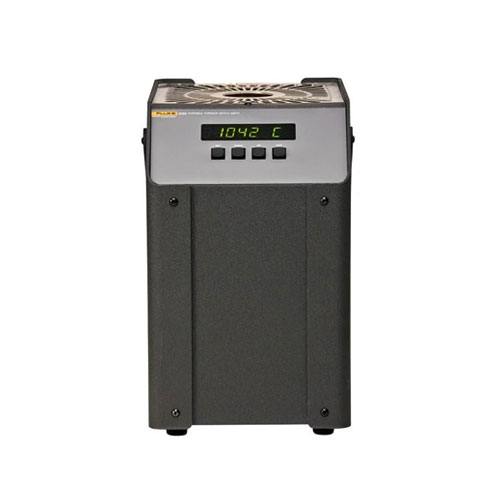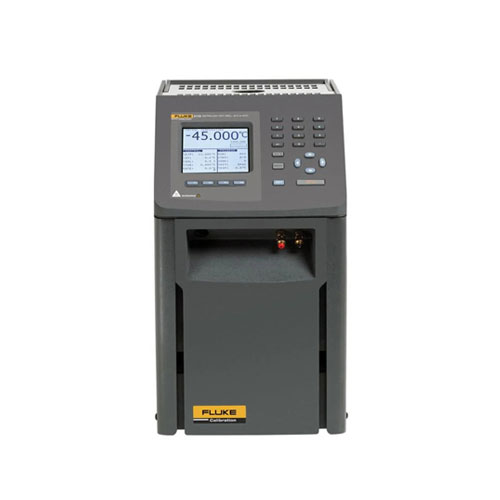Fluke 5608 and 5609 Secondary PRT with Calibration Options
- 5608: –200 °C to 500 °C (80 mm minimum immersion)
- 5609: –200 °C to 670 °C (100 mm minimum immersion)
- ± 0.01 short-term stability
- Calibration not included, NVLAP-accredited calibration optional, lab code 200348-0
- Dry-well reference with 90 ° bend
- Description
- Additional information
- Specifications
Description
The Fluke 5608 and 5609 are Secondary Standard Platinum Resistance Thermometers (PRTs). This means they are highly accurate temperature sensors that are themselves calibrated against primary standards (like the triple point of water) and used to calibrate other temperature sensors.
Key Features:
- High Accuracy: Both models offer exceptional accuracy and stability, making them suitable for demanding calibration applications.
- Wide Temperature Range:
- 5608: -200°C to 500°C (80 mm minimum immersion)
- 5609: -200°C to 670°C (100 mm minimum immersion)
- ± 0.01 short-term stability
- Calibration not included, NVLAP-accredited calibration optional, lab code 200348-0
- Dry-well reference with 90 ° bend
- Robust Construction: Designed to withstand harsh environments and provide reliable long-term performance.
- Precise Manufacturing: Manufactured with meticulous attention to detail to minimize measurement uncertainties.
- Calibration Traceability: Can be calibrated to national standards for traceable measurements.
Applications:
- Calibration Laboratories: Used to calibrate other temperature sensors, such as RTDs, thermocouples, and thermistors.
- Process Control: Monitoring and controlling temperature in critical industrial processes.
- Quality Control: Ensuring product quality and consistency through precise temperature measurements.
- Pharmaceutical Manufacturing: Maintaining accurate temperatures is crucial for the stability and efficacy of pharmaceuticals.
The Fluke 5608 and 5609 are high-precision Secondary Standard PRTs that play a crucial role in establishing and maintaining accurate temperature measurements across various industries and scientific applications.
Additional information
| Brand | Fluke Calibration |
|---|
Specifications: Secondary PRT with Calibration Options – 5608 and 5609
| Specifications | |||||||||||||||||||||||
| Temperature range |
5608: –200 °C to 500 °C 5609: –200 °C to 670 °C |
||||||||||||||||||||||
| Nominal resistance at 0.01 °C | 100 Ω ± 0.5 Ω | ||||||||||||||||||||||
| Temperature coefficient | 0.0039250 Ω/Ω/°C | ||||||||||||||||||||||
| Relative Accuracy[1] | ± 0.007 °C at –200 °C ± 0.008 °C at 0 °C ± 0.020 °C at 420 °C ± 0.027 °C at 660 °C |
||||||||||||||||||||||
| Short-term repeatability[2] | ± 0.007 °C at 0.010 °C ± 0.013 °C at max temp |
||||||||||||||||||||||
| Drift[3] | ± 0.01 °C at 0.010 °C ± 0.02 °C at max temp |
||||||||||||||||||||||
| Hysteresis | ± 0.01 °C maximum | ||||||||||||||||||||||
| Sensor length | 30 mm ± 5 mm (1.2 in ± 0.2 in) | ||||||||||||||||||||||
| Sensor location | 3 mm ± 1 mm from tip (0.1 in ± 0.1 in) | ||||||||||||||||||||||
| Sheath material | Inconel™ 600 | ||||||||||||||||||||||
| Minimum insulation resistance | 5608: 500 MΩ at 23 °C, 20 MΩ at 500 °C 5609: 500 MΩ at 23 °C, 10 MΩ at 670 °C |
||||||||||||||||||||||
| Transition junction temperature range[4] | –50 ºC to 200 °C | ||||||||||||||||||||||
| Transition junction dimensions | 71 mm x 12.5 mm (2.8 in x 0.49 in) | ||||||||||||||||||||||
| Minimum immersion length[5] (<5 mK error) |
5608: 80 mm (3.1 in) 5609: 100 mm (3.9 in) |
||||||||||||||||||||||
| Maximum immersion length | 305 mm (12 in) | ||||||||||||||||||||||
| Response time[5] | 5608: 9 seconds typical 5609: 12 seconds typical |
||||||||||||||||||||||
| Self heating (in 0 °C bath) | 5608: 75 mW/°C 5609: 50 mW/°C |
||||||||||||||||||||||
| Lead-wire cable type | PTFE 24 AWG | ||||||||||||||||||||||
| Lead-wire length | 1.8 m (6 ft) | ||||||||||||||||||||||
| Lead-wire temperature range | –50 °C to 250 °C | ||||||||||||||||||||||
| Calibration | |||||||||||||||||||||||
| [1] Includes short-term repeatability and 100 hr drift. Calibration will add additional uncertainties.
[2] Three thermal cycles from min to max temp, includes hysteresis, 99.9 % confidence (k=3) [3]After 100 hours at max temp, 99.9 % confidence (k=3) [4] Temperatures outside this range will cause irreparable damage. For best performance, transition junction should not be too hot to touch. [5] Per ASTM E 644 |
|
||||||||||||||||||||||




















